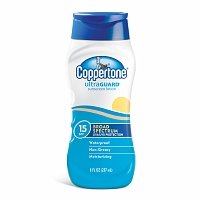 Even though fall is here and people are breaking out boots and sweaters, skin care and sun protection should still be on the top of your list.
Even though fall is here and people are breaking out boots and sweaters, skin care and sun protection should still be on the top of your list.
Studies have shown that the fall and winter sun rays have an even more damaging effect on skin due to the proximity of the sun. However, it can be overwhelming to know what type of sunscreen you need.
This guide will walk you through choosing a sunscreen that suits your skin type and activity level.
SPF: the higher the number, the higher the level of protection?
 Many people are under the impression that if they use a sunscreen with a higher SPF, they will have a significantly higher level of protection from the sun. What they don’t understand is that:
Many people are under the impression that if they use a sunscreen with a higher SPF, they will have a significantly higher level of protection from the sun. What they don’t understand is that:
- The SPF rating on sunscreen describes the amount of UVB rays (which cause sunburns) it will block, not the UVA rays that actually cause the long-term skin damage and wrinkles
- Sunscreen with an SPF of 15 is actually sufficient in blocking most UVB rays, if applied heavily and often throughout someone’s time in the sun–at least every two hours
- While it is true that higher levels of SPF will block more UVB rays, it is not a significant increase, merely 2-4% higher
- Regardless of the strength of the sunscreen against UVB rays, it must be applied often; even the highest SPF sunscreen will wear off throughout the day.
- Sufficiently protecting against UVA rays requires a bit more research, including seeking out sunscreens that contain ingredients deemed by the Food and Drug Administration to protect against UVA rays. -Different skin types require varying degrees of UVB and UVA protection.
UV Damage to Skin Revealed in This Video!
[weaver_youtube http://youtu.be/py9C4a8ky8o percent=100 ratio=0.5625 center=1 rel=0 autoplay=0 https=0 privacy=0 {youtube options}]
Evaluating your skin type and choosing the right sunscreen
Whether you are trying to tan, avoid burning or simply protect your skin, it is very important to properly evaluate your skin type and choose the sunscreen that is best suited to you. Not everyone tans the same – there’s a reason tanning salons ask you about your skin type. Here’s how to select an SPF level that fits exactly what you need:
Choose SPF 30 or higher if:
- You have pale skin
- Skin with many moles or that freckles easily
- Are a natural blond or redhead
- Have skin that burns easily
It is safe to use SPF 15 if:
- You have a medium, olive or dark skin tone
- You do not freckle or burn easily
While it is true that a higher SPF will make it more difficult to become tanned, you will receive some color if you spend time in the sun, even if you are wearing sunscreen with a high SPF. If you are going to be spending more than two hours in the sun, it’s important to try and do so before the afternoon when the sun rays are the strongest and most likely to damage and burn your skin. There is truly no 100% safe way to tan; remember that tanning is your skin’s natural reaction to possible sun damage, and it is always preferable to avoid tanning for hours-on-end to prevent long-term damage to your skin.
 If you’re in a pinch and don’t have time to put on sunscreen daily, try a moisturizer or foundation that has SPF included. They are typically a lower level of SPF, but some protection from those rays is better than none!
If you’re in a pinch and don’t have time to put on sunscreen daily, try a moisturizer or foundation that has SPF included. They are typically a lower level of SPF, but some protection from those rays is better than none!
Editor’s note:There is a wide choice of spf 15 moisturizers at Amazon. To check out the range and find a suitable one for your skin type like the product pictured above, right, please use the link to browse the selection we have picked for you!
This is a guest post by author, Machelle Moulton who is a writer for Ivein.com, specialists in Provo Varicose Vein Treatments. The expert doctors at Ivein.com can help diagnose and effectively treat your spider veins using their top of the line technology. In her spare time, Machelle enjoys hiking the local Utah mountains, reading, and camping.